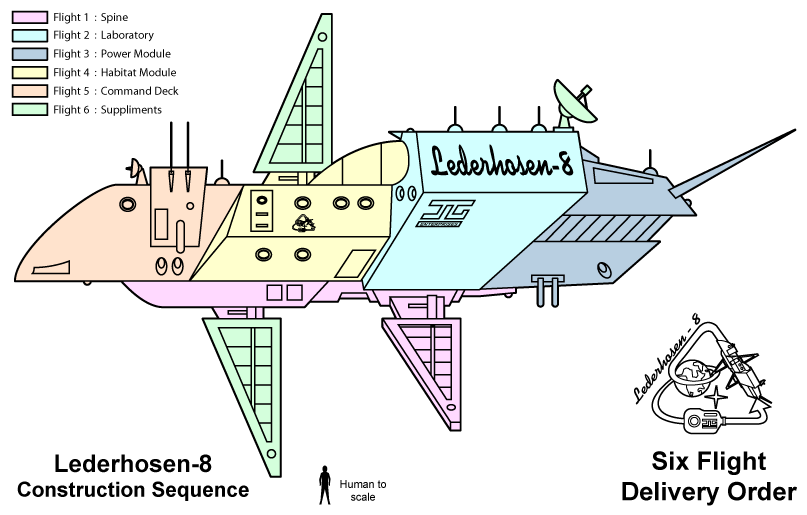 |
|
This diagram illustrates the layout of Lederhosen-8 and the order that each major component was delivered into orbit. Each flight is discussed in greater detail below.
|
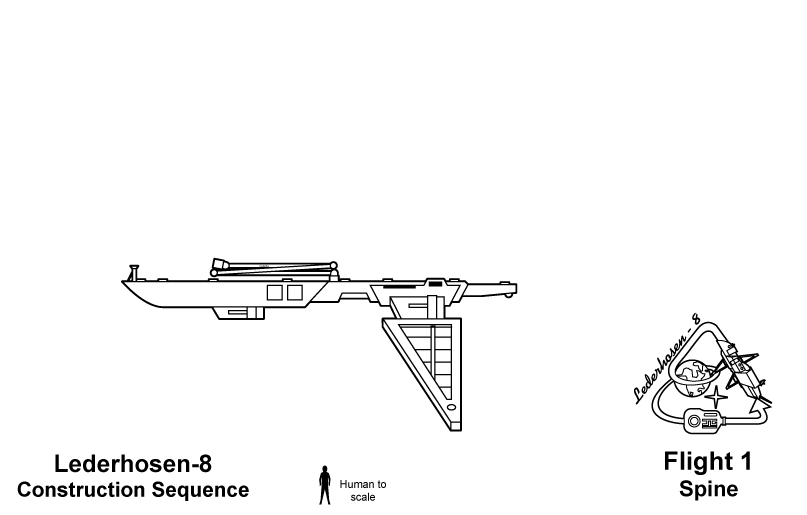 |
FLIGHT 1 • 12 January 2000
Flight 1 carried the first section of the Lederhosen-8 station into orbit on Wednesday 12 January 2000. This consisted of the station's spine and two solar arrays, V1 and V2. These arrays are mounted on pivots allowing them to fold against the spine during its time in the rocket's payload canister.
The Robotic Construction Arm (RCA) was lifted into orbit at this time, mounted to the spine. At the forward end of the spine was a mooring mast that allowed the Aegir crew vehicle to dock to the station in the absence of a proper docking port.
|
 |
FLIGHT 2 • 24 March 2000
The station's laboratory module was shipped into orbit on Friday 24 March 2000. When the station became operational this facility would allow for a wide range of experments to be carried out. The largest single piece of the station, the laboratory features a high-bay for large-scale experiments in a null-gravity environment.
The first visitors to the station arrived on 8 April to physically connect the lab module to the spine. The RCA was relocated to the top of the lab at this time.
|
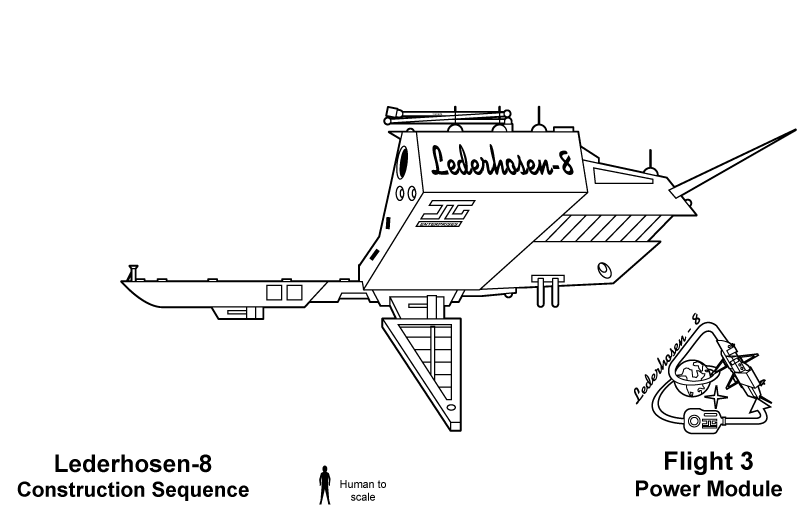 |
FLIGHT 3 • 8 May 2000
The power plant arrived at the station on Monday 8 May 2000. This unit would convert the energy from the station's batteries and solar arrays into a usable power supply to run the station and sustain a crew. The power module also carries a pair of reaction control thrusters and a number of communications antennas.
A work crew arrived on 29 May to wire the power module into the station.
|
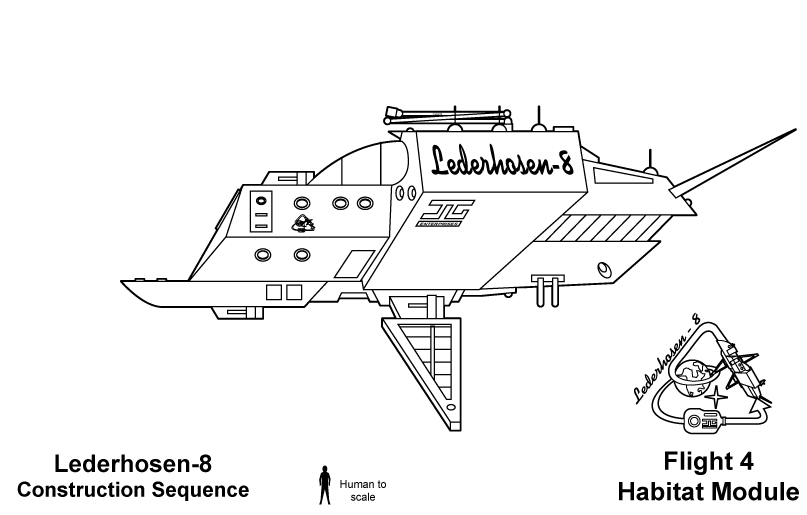 |
FLIGHT 4 • 20 July 2000
The station's habitat module was delivered Thursday 20 July 2000. This would give the station the capability to finally support a crew. The habitat module contains living areas for the crew: areas for sleeping, exercising and dining as well as bathroom facilities.
The habitat module also includes the station's two primary airlocks and docking ports. These are designed to be compatable with a special collar on the Aegir crew vehicle.
A final work crew arrived on 1 August to install the habitat module to the station. Before leaving they removed the Aegir mooring mast from the spine to make room for the command module. The station was formally commissioned at this time.
The first crew came aboard on Tuesday 24 October for a nine-month stay aboard the new station. |
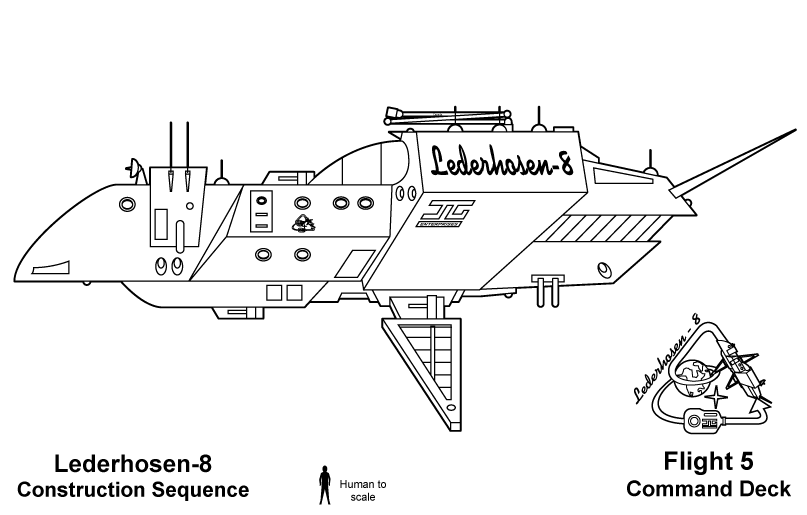 |
FLIGHT 5 • 1 November 2000
Crew I astronauts Roger Drutmann and Abel Dinglewitz oversaw the delivery of the last major component of the station on Wednesday 1 November 2000. The command deck was designed to enable centralized control of the station and its functions, along with all communications and docking proceedures.
The command deck also features a large pair of forward viewports that offer a remarkable view of the Earth below.
|
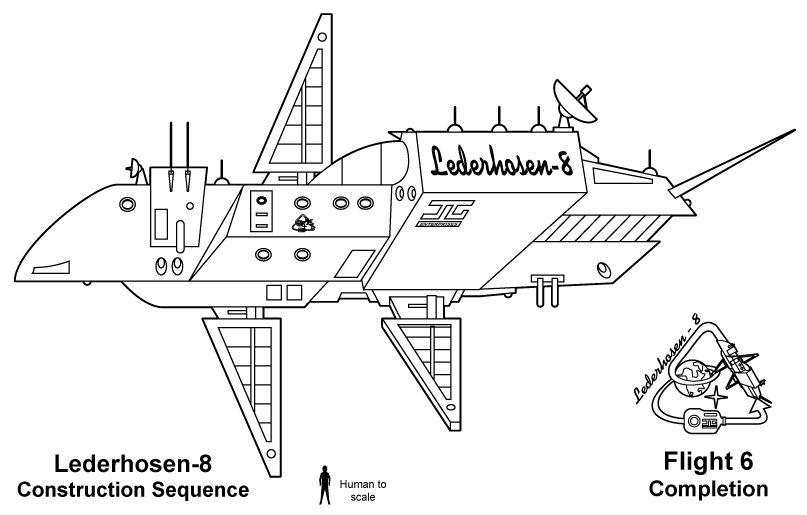 |
FLIGHT 6 • 14 December 2000
One final payload was delivered on Tuesday 14 December 2000, which consisted of two additional solar arrays (D1 and V3) and a large radio receiver dish. These were installed over the course of three spacewalks.
With construction of the station completed, the RCA was dismounted and stowed for return to Earth when Crew I was relieved in July 2001.
|


 Back
Back